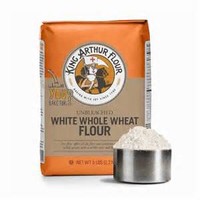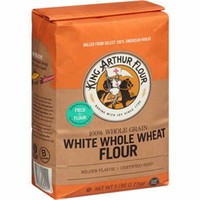Facts about Flour

Bread, pasta, crackers, many cakes, and many other foods are made using flour.
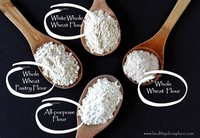
Various materials typically are added to the flour, including bleaching agents, oxidizing agents, vitamins, minerals, leavening agents, and salt (Blanchfield 2002).

Whole wheat flour is made using all parts of the kernel, while white flour is produced using only the endosperm (Blanchfield 2002).

In Britain, many flours go by names different than those from America.

Soft flour is usually divided into "cake flour," which is the lowest in gluten, and "pastry flour," which has slightly more gluten than cake flour.

Flour always contains a high proportion of starches, which are complex carbohydrates also known as polysaccharides.

Flour made from all parts of the grain (extraction rate: 100 percent) leaves about 2 grams ash or more per 100 grams dry flour.

Until modern times, much flour contained minute amounts of grit, either the result of poor sifting of the grain or of grinding stones together.

Plain white flour (extraction rate: 50-60 percent) leaves only about 0.4 grams.

Ground legumes and nuts, such as soy, peanuts, almonds, and other tree nuts, are also called flours.

Modern processing involves many different processes, including grading the wheat, purifying the wheat, preparing the wheat for grinding, grinding the wheat, and processing the flour (Blanchfield 2002).
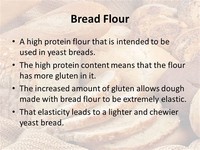
The higher percentage of protein in hard wheat means more gluten, allowing it to rise more than soft wheat flour.

Flour dust suspended in air is explosive, as is any mixture of a finely powdered flammable substance with air.

Wheat varieties are called "white," or "brown" if they have high gluten content, and "soft" or "weak flour" if gluten content is low.

Regulations in many countries require that wheat flour be enriched with vitamins (niacin, riboflavin, thiamine) and iron, if not other nutrients, to replace nutrients lost in the production of refined flour.

Wheat flour is one of the most important foods in European and American culture, and is the defining ingredient in most types of breads and pastries.

Stone-ground flour, which is naturally more nutritious, is produced by grinding the grain between two slowly moving stones (Herbst 2001).

Soft flour is comparatively low in gluten and so results in a finer texture.

Flour is the key ingredient of bread, which is the staple food in many countries, and therefore the availability of adequate supplies of flour has often been a major economic and political issue.
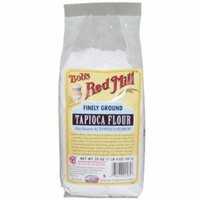
Flour is a finely ground powdery foodstuff obtained by grinding cereal grains or other edible, starchy portions of plants and used chiefly in baking.

Human creativity is reflected in the production of flour, the many types of flours produced, and the diversity of baked foods that are prepared with flour.

Production of flour has taken place since prehistoric times (Blanchfield 2002).
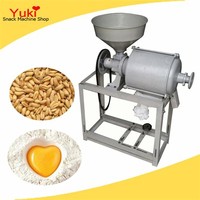
Milling of flour is accomplished by grinding grain between stones or steel wheels.

Flour can also be made from soy beans, arrowroot, taro, cattails, acorns, peas, beans, and other non-grain foodstuffs.

The same substances ground more coarsely are called "meal" instead of "flour."

Flour is most commonly made from wheat and when the word "flour" is used without qualification, it usually implies wheat flour.

Whole grain or wholemeal flour is made from the entire grain including bran, endosperm, and germ.
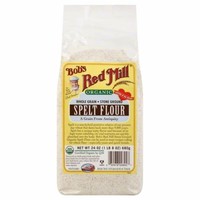
Steelmaking, including its ironmaking component, has accounted for most manganese demand—presently in the range of 85–90 percent of the total demand.

